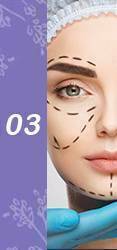Welcome to single gateway for Primary Care, Medical Spa, Travel Clinic and Weight Loss clinic
Onestop Aesthetic Travel and Wellness Center
As seen on TV featuring weight loss and hair restoration programs.
Join us on national TV as we unveil an extraordinary transformation journey through our world-class Weight Loss and Hair Restoration Program offered at Onestop Aesthetic Travel and Wellness Center. Dr. Anuja Garg is dual board-certified in Internal medicine and Obesity medicine. She is also a travel medicine certified by the CDC. We offer cutting-edge treatments and personalized experiences that empower individuals to achieve their desired confidence and rejuvenation.
Click on the links below to get a detailed overview of the services offered at OneStop Aesthetic Travel And Wellness Center.
Our Vision
Onestop Aesthetic Travel and Wellness Center
Our vision at One Stop is to provide a single getaway for primary care, aesthetic care, travel and weight loss medicine . We also prescribe weight medications for eligible candidates. We accept all major insurances. We also provide telehealth services to all patients as required.
We do itinerary specific travel assessments, provide guidance on preventing commonly prevalent diseases , provide prophylaxis against malaria and traveler’s diarrhea. We also provide yellow fever vaccine, rabies vaccine and international vaccine certificates as required . We provide yellow fever vaccine waivers to eligible patients.
We do a complete weight assessment, take an obesity directed history and exam, check and monitor all relevant labs, provide lifestyle coaching , help you create a healthy diet plan. We will also provide fitness coaching to all patients who will enroll in our weight loss program.
We do provide meal replacements if the patient desires.
We accept walk-ins for acute care. We also see non- insured patients and visitors at a flat fee rate. Please call us to inquire more about this.
We do in-depth facial analysis and can guide you in knowing exactly what you need to achieve a perfect look. We use only FDA approved machines.
Languages Spoken: Dr. Garg can speak English, Hindi, Urdu and Punjabi
Why Choose Us ?
- Dr. Garg has 16+ years of experience in Internal Medicine
- Dr. Garg has performed 100s of aesthetic procedures since we opened in July 2022. She performs all Aesthetic injections like Botulinum toxin and fillers by herself. You can look at our exceptional results on our Instagram page.
- Expertise in managing complex cases and aesthetic procedure complications due to her Internal Medicine background.
- Expertise with lip fillers (Juvederm, Restylance, etc.), cheek fillers (Juvederm, Restylance, etc.), Botulinum toxin, Dysport, and Xeomin on all different facial areas, and Kybella. You can read our exceptional reviews at Google, Zocdoc, and Yelp.
- We use all FDA-approved devices for ablative, non-ablative laser, and microneedling procedures. All procedures were performed under the close supervision of Dr Anuja Garg.
- In our weight loss practice, we have achieved an average of 3 – 5 pounds of weight loss per week. In record time, we have achieved this weight loss, where patients have lost 20 to 30 pounds within the initial two months. We are using an innovative 3-phased approach to make sure you make lifestyle changes so you don’t gain the lost weight back.
- Special interest in the diagnosis and treatment of common diseases like Diabetes, Hypothyroidism, Hyperlipidemia, and Hypertension
- She has a Certificate of Travel Health from the International Society of Travel Medicine. https://wwwnc.cdc.gov/travel/yellowbook/2020/introduction/introduction-to-travel-health-and-the-cdc-yellow-book
- The CDC is not a medical facility. It recommends clinicians needing assistance with preparing patients for international travel be referred to a travel clinic listed on the International Society of Travel Medicine (ISTM) website (www.istm.org).
- We are a CDC designated Yellow Fever Vaccine center
- Cost-effective skincare consultations and aesthetic treatments with cash pay options for uninsured patients.
- Physical yoga coach for success with weight loss program
- Evaluation and monitoring of lab parameters while providing consultation and treatment for weight loss
- Cost-effective Meal Replacement Plans available
- Dr. Garg is USCIS’s designated civil surgeon.
- Board-certified in Obesity Medicine, Internal Medicine and certified Travel Medicine and Aesthetic Medicine.
- Minimum wait times and convenient online booking options for Aesthetics, including Botulinum toxin, Fillers and Laser Skin treatment, and primary care and USCIS patients
- Dr. Garg is also a part-time attending physician at Kaiser Permanente, Walnut Creek Medical Center.
Our Team

Dr. Anuja Garg, MD
Dr Garg is board certified by the American Board of Internal Medicine, American Board of Obesity Medicine (ABOM), and CDC-recommended Certificate of Travel Health from the International Society of Travel Medicine, trained by the American Board of Aesthetic Medicine (ABAM), USCIS-certified civil surgeon. Read more.
Patient Reviews
I have been using the services of Dr Anuja Garg as my physician and weight loss specialist since March 2024.
We decided to follow the clinic weight loss program after taking all the necessary precautions. 10 weeks in; I have lost rather effortlessly 55 pounds.
I fully trust Dr Garg and her team to monitor my health during my weight loss journey and beyond.
I highly recommend the clinic.
Overall a good experience, I will recommend this if you want to get medicals done for immigration
Great service. Thank You Dr. Garg





